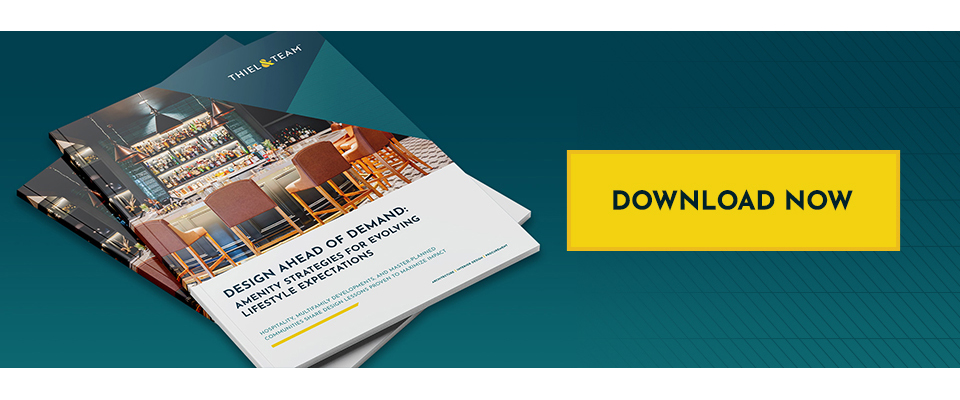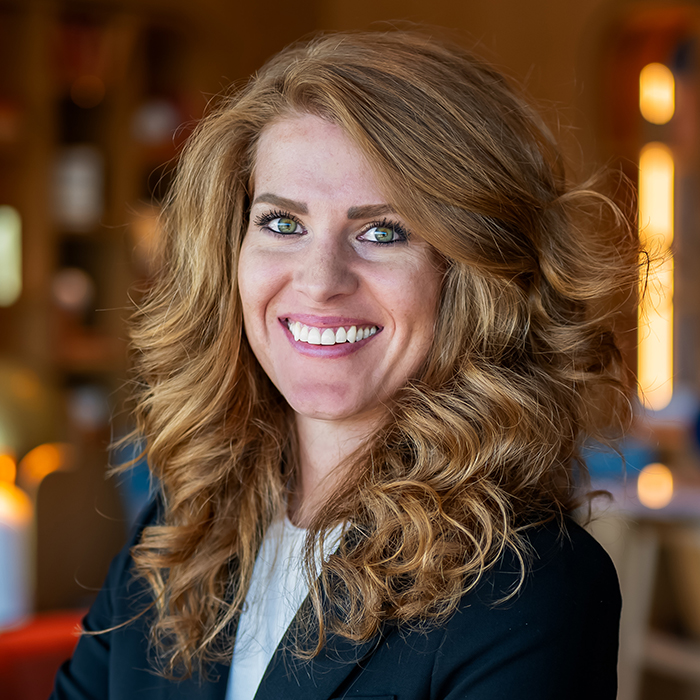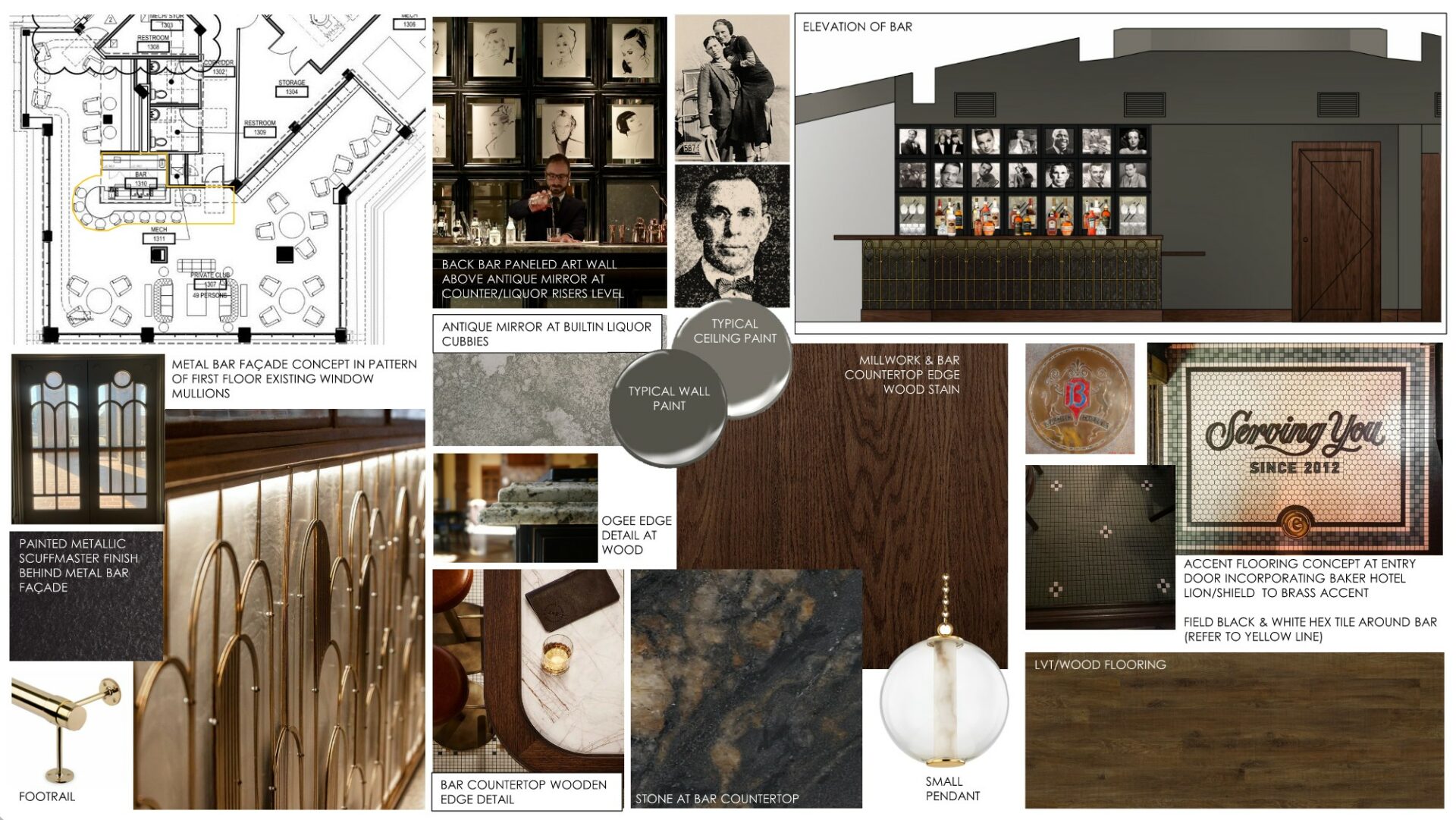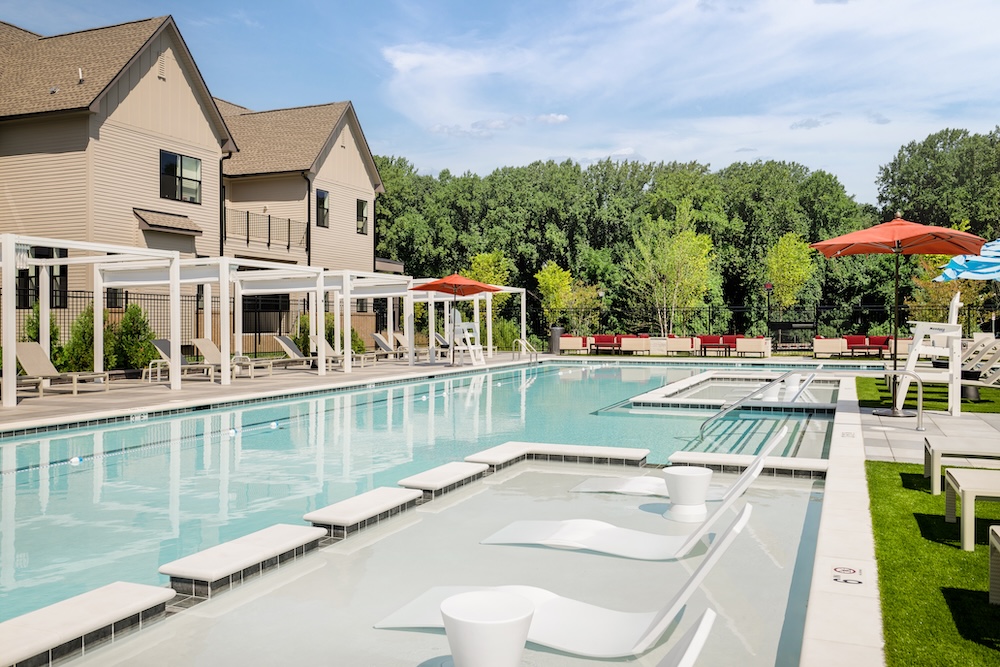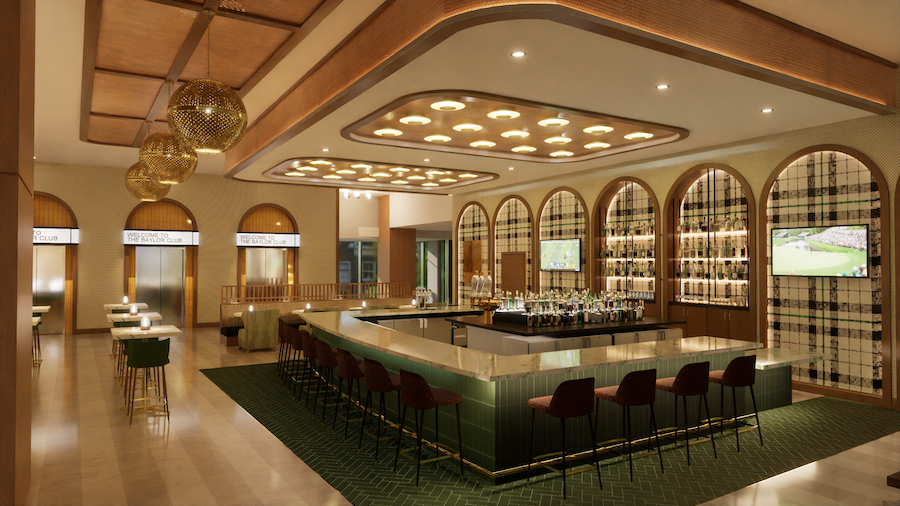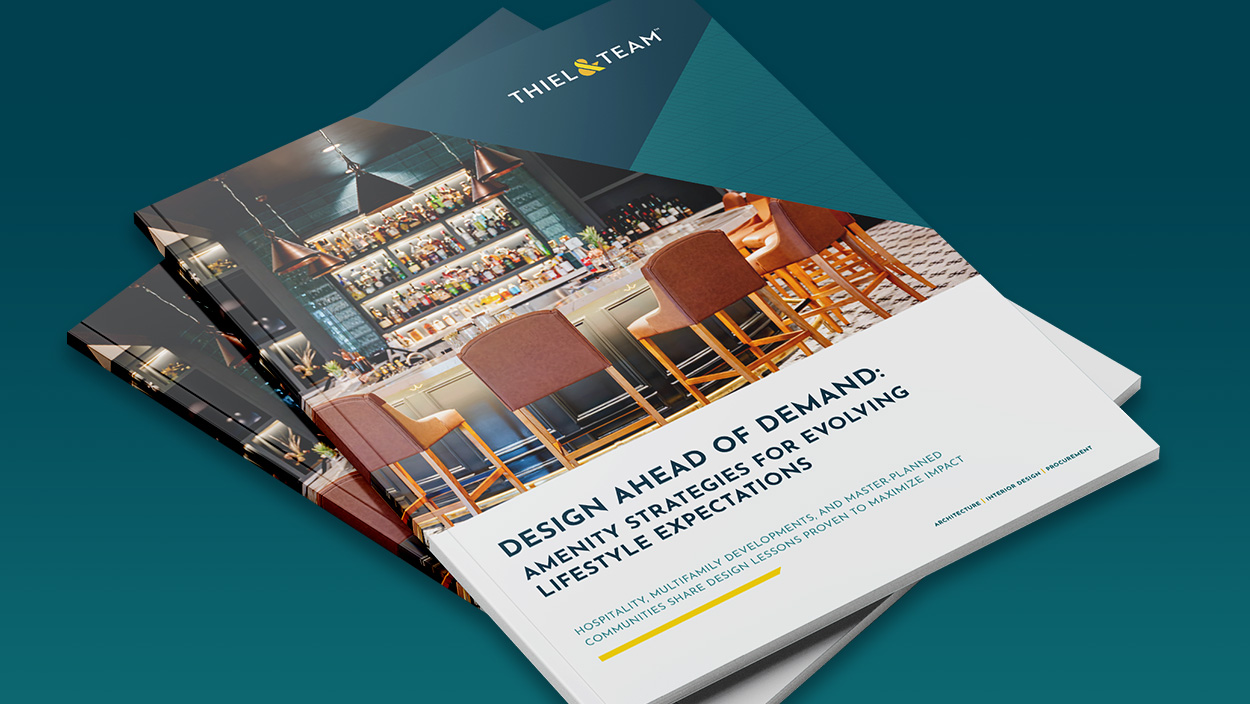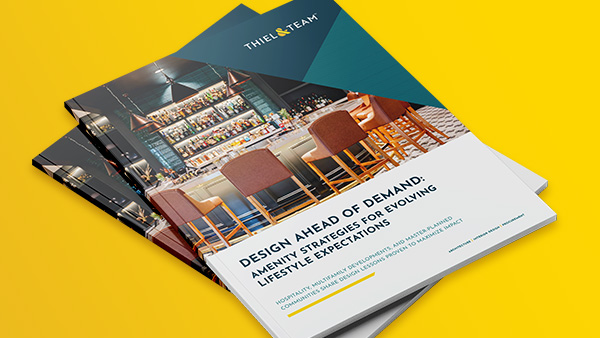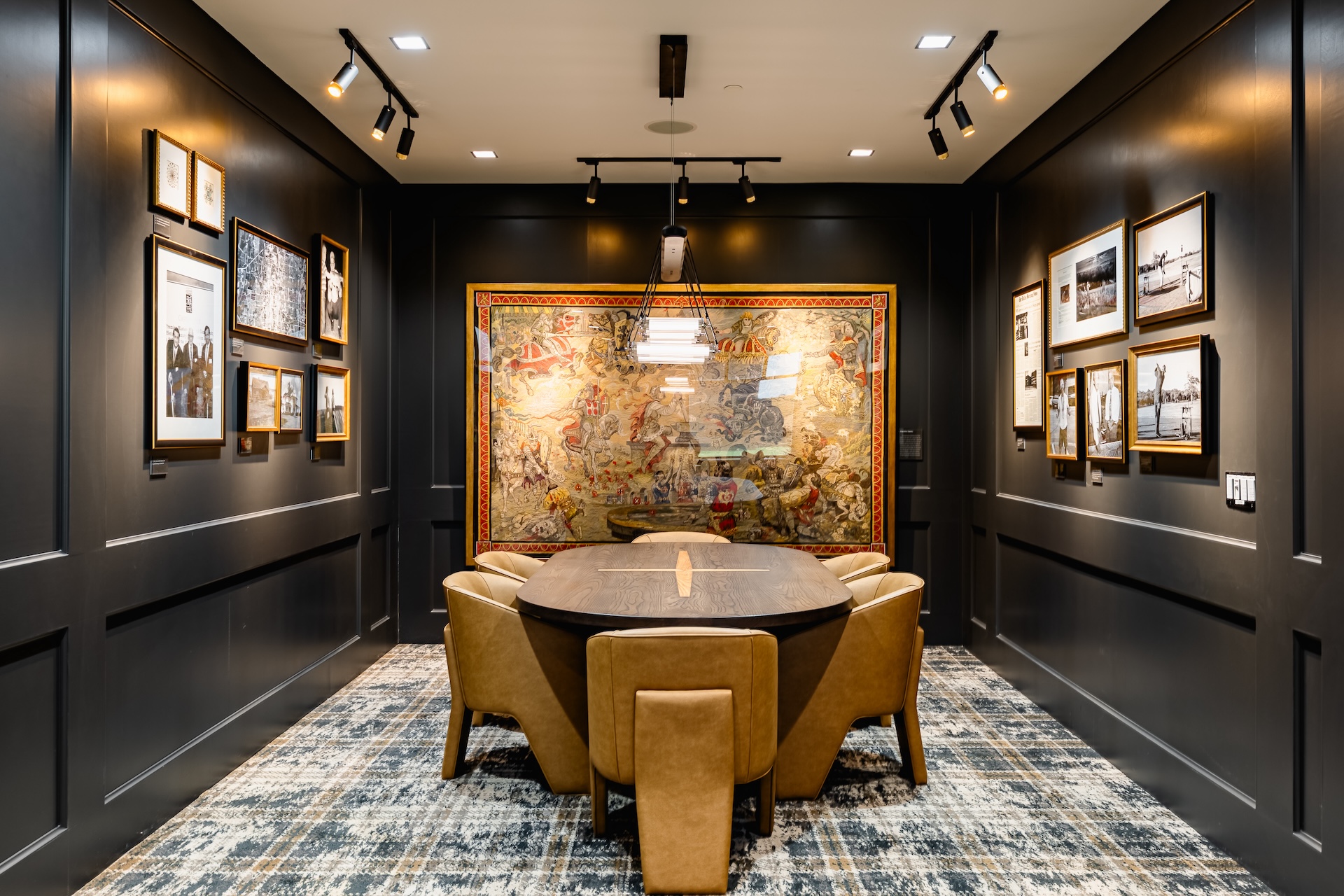
Consumer purchasing decisions have come a long way in a short time, upending time-tested design strategies across the hospitality, multifamily, and master-planned community sectors. Extraordinary aesthetics and exceptional service were once the hallmarks of a luxury property. Today, those traits represent the bare minimum. Expectations for amenities have changed as consumers prioritize properties that offer an opportunity to build community.
To stand apart, property developers can harness purpose-driven design to deliver the connected experiences that resonate deeply with their target audience.ar
By borrowing strategies honed in hospitality experience design, multifamily and master-planned community owners and operators can turn every square foot into an opportunity to create the strong sense of community that contributes to revenue and retention. Below are design lessons that can help set properties apart in today’s competitive housing market.
The Business Case for Community Building
When developers infuse their properties with elements carefully crafted to curate powerful emotions, they inspire the strong sense of connection that leads to increased demand. For example, StatisFacts’ Renter Study has found that apartment tenants’ “sense of community” grew in importance by 19% from 2019 through 2022 as a reason that renters decide to renew their lease.
When it comes to making properties competitive within their market, design that inspires emotion and connection becomes an essential strategic element. Creating the right experience requires speaking to consumers’ emotions to build a sense of connection to community and, by extension, property. Research by Harvard professor Gerald Zaltman has found that 95% of purchasing decisions are driven by emotion. Consumer intelligence firm Motista indicates that fully connected customers are 52% more valuable than those who report being “highly satisfied.” This connection translates to more frequent use and more purchases in the hospitality sector. For multifamily and master-planned community developers, this sense of connection can serve as the tipping point in finalizing a contract.
Strengthen Connection through Multi-Generational Spaces
One of the most essential strategies for creating a sense of connection is to reevaluate a property’s target audience. For example, golf and country clubs have found that can create the strong emotional connection that reduces churn by engaging the entire household. What’s more, creating family-inclusive spaces – from private swim lessons and junior golf clinics to family cooking classes and multi-age wellness events – unlocks secondary revenue streams.
Achieving this shift isn’t as simple as adding kids’ clubs. It depends upon the use of intentional design to create multi-generational value. By designing a hospitality-infused experience, owners and operators can generate deeper loyalty and a stronger return on investment.
This intentionality begins with an evaluation of how every available square foot is being utilized to maximize ROI. For example, The Lakes at Castle Hills in Lewisville, Texas, recognized that increasing family engagement at the club presented a real growth opportunity. While the club was committed to retaining its men’s only 19th hole, it opted to create opportunities for a nearby family-friendly outdoor area supported by food and beverage services. While there are distinct boundaries between the two spaces, they are blended visually to create a flexible space for use by members and families, boosting family programming and use for outdoor events.
Developers for master-planned and multifamily communities are taking a similar approach. While Riverton Pointe in Hardeeville, S.C., caters to active adults seeking luxury living, designers created space for the entire family to feel welcome. The community is expanding with the addition of a 14,370-square-foot clubhouse that will include private, family-oriented spaces capable of hosting celebrations and serving as an extension of residents’ homes when families visit. The clubhouse also incorporates nearly 5,000 square feet of covered outdoor spaces designed for year-round use, inviting residents and guests to explore the spacious greenways. Additional amenities, such as the on-site restaurant and resort pool, offer room for communities to grow.
Design a Hospitality Experience Beyond the Home
Developers are finding that they can design layered experiences that engage all potential visitors, from toddlers to grandparents, without sacrificing the experience of their core renter. For example, developments can incorporate playgrounds within private courtyards or activity stations along adjacent bike trails. Multi-age programming zones can host kids’ yoga in the morning and wine tastings at night.
In addition, more communities are installing multiple smaller pools over a single resort-style pool to create separate spaces for adults with and without young families. Pickleball courts have proven to have staying power because they provide space for multiple generations to enjoy. Placing activity lawns with toddler-safe turf alongside hammock gardens creates space for everyone to play and relax as they see fit.
While family-friendly gathering spots such as pizza ovens, splash pads, and outdoor movie lawns are gaining in prevalence, developers can accommodate multiple generations through simpler design details. Amenity centers that prioritize flexible indoor-outdoor social space over traditional formality can feel like an extension of the home for everyone.
To truly create a sense of community, developers need to accommodate another member of the family to accommodate: the family pet. As of 2023, pet owners make up the majority (59%) of renters, according to research by Zillow. The National Association of Realtors has found that 68% of owners agree that a community’s animal policy will impact their decision to purchase or rent a home.
Luxe pet lounges with grooming zones, treat bars, and play areas are no longer relegated to back corners – they’re being highlighted as a key area for social engagement. Properties are developing spacious dog parks where residents and their pets can unwind and socialize. Multifamily properties are adding fences to ground-floor units to position them as premium options for providing pet accessibility. To support this trend, designers must deliver high-performance finishes able to stand up to the wear and tear of pets to ensure comfort for all residents.
Sandy 28 in Portland, Ore., puts its renters’ furry friends first. The development is home to a community dog park that helps pups and owners feel at home, with comfortable seating adjacent to the dog run. The lounge features pet beds alongside the coffee bar, with ample space for socialization. It’s not alone in making pets a priority. The Perch PDX features a thoughtfully designed onsite dog wash station, featuring integrated crates and multiple leash hooks so owners can safely attend to multiple pets.
Let’s Create a Community
The ability to create a sense of community is rooted in one word: intention. With an intentional design strategy that prioritizes a hospitality experience at home, owners, developers, and operators can foster the sense of belonging that will help their property outperform computers.
Thiel & Team helps developers and owners deliver the community experiences that their guests and members want. Reach out to discuss how we can help you create fresh opportunities for engagement and connection.
